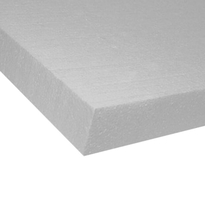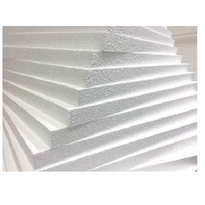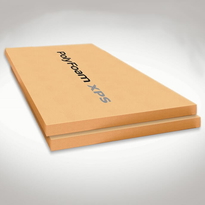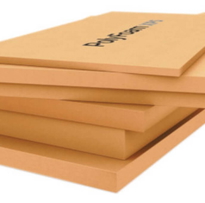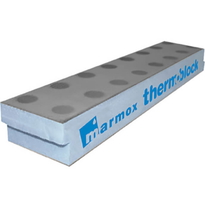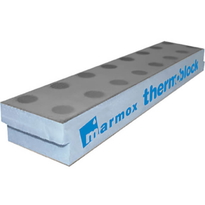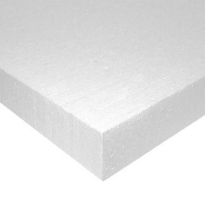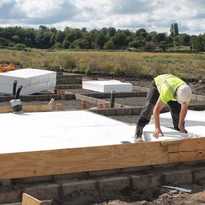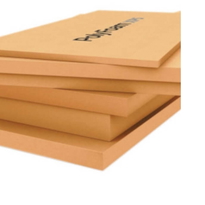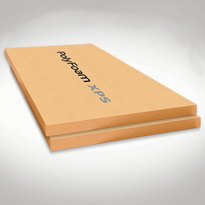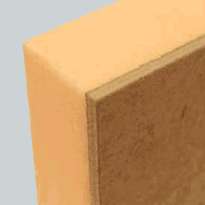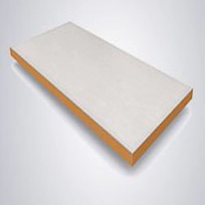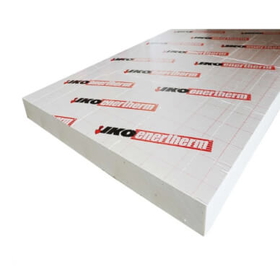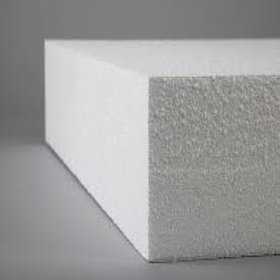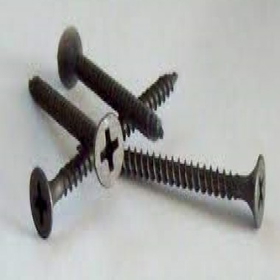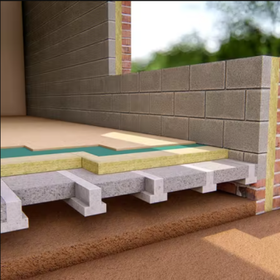Perimeter Upstand Insulation
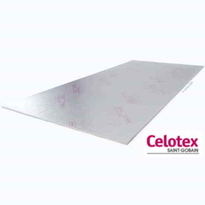
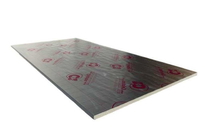
Celotex GA4000 - High-Performance PIR Insulation Board - 2400 x 1200mm
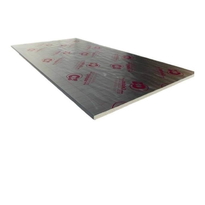
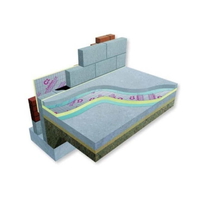
Celotex XR4000 - High-Performance PIR Insulation Board - 2400 x 1200mm
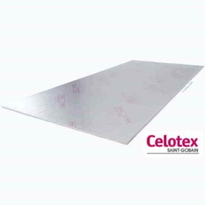
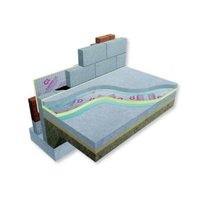
Celotex TB4000 - High-Performance PIR Insulation Board - 2400 x 1200mm
Similar Categories
Perimeter Upstand Insulation: A Guide to Choosing and Installing the Right Product
Perimeter upstand insulation is a type of insulation that is used to reduce heat loss and prevent thermal bridging at the junction between the floor slab and the external wall. It is also known as perimeter edge insulation or upstand insulation board. Perimeter upstand insulation is essential for achieving a high level of thermal performance and energy efficiency in buildings, especially in cold climates.
Perimeter upstand insulation can be made from various materials, such as polystyrene, polyisocyanurate (PIR), extruded polystyrene (XPS), or mineral wool. Each material has its own advantages and disadvantages, depending on the application, budget, and preference. In this article, we will discuss the benefits of perimeter upstand insulation, the factors to consider when choosing a product, and the best practices for installing it.
Benefits of Perimeter Upstand Insulation
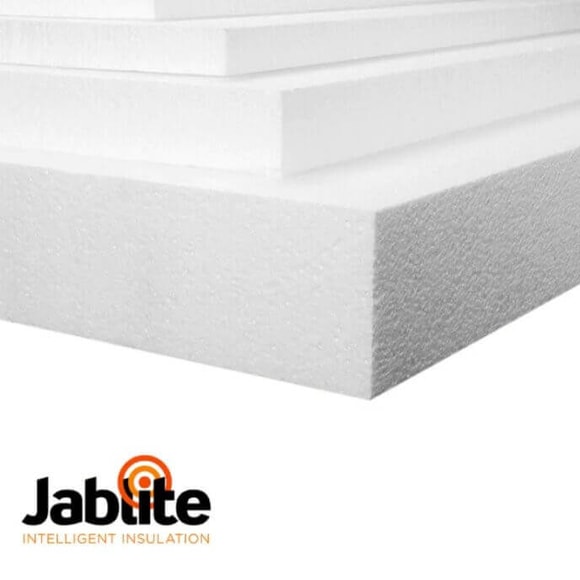 Perimeter upstand insulation offers several benefits for both the building and the occupants, such as:
Perimeter upstand insulation offers several benefits for both the building and the occupants, such as:
- Reducing heat loss: Perimeter upstand insulation reduces the heat loss through the floor slab and the external wall, which can account for up to 10% of the total heat loss in a building. By reducing the heat loss, perimeter upstand insulation can lower the energy consumption and the heating bills of the building.
- Preventing thermal bridging: Thermal bridging occurs when a material or a component with a high thermal conductivity creates a path for heat to escape from the building. Thermal bridging can cause cold spots, condensation, mould growth, and reduced thermal comfort in the building. Perimeter upstand insulation breaks the thermal bridge between the floor slab and the external wall, which can improve the thermal performance and the indoor air quality of the building.
- Enhancing fire safety: Perimeter upstand insulation can also act as a fire barrier, preventing the spread of fire from the floor slab to the external wall or vice versa. Some perimeter upstand insulation products have a high fire resistance rating, which can increase the fire safety of the building.
- Improving aesthetics: Perimeter upstand insulation can also improve the appearance of the building, by creating a neat and uniform finish at the junction between the floor slab and the external wall. Some perimeter upstand insulation products have a decorative surface, which can enhance the visual appeal of the building.
Factors to Consider When Choosing a Perimeter Upstand Insulation Product
When choosing a perimeter upstand insulation product, there are several factors to consider, such as:
- Thermal conductivity: Thermal conductivity is a measure of how well a material conducts heat. The lower the thermal conductivity, the better the insulation performance. Perimeter upstand insulation products have different thermal conductivities, ranging from 0.022 W/mK to 0.040 W/mK. The choice of thermal conductivity depends on the target U-value, the thickness of the insulation, and the available space.
- Compressive strength: Compressive strength is a measure of how well a material can withstand compression. The higher the compressive strength, the more durable and resistant the insulation is. Perimeter upstand insulation products have different compressive strengths, ranging from 70 kPa to 700 kPa. The choice of compressive strength depends on the load-bearing capacity of the floor slab, the expected foot traffic, and the installation method.
- Water resistance: Water resistance is a measure of how well a material can resist water absorption and moisture damage. The higher the water resistance, the more stable and long-lasting the insulation is. Perimeter upstand insulation products have different water resistances, ranging from 0.7% to 5%. The choice of water resistance depends on the exposure to water and humidity, the risk of flooding, and the drainage system.
- Fire performance: Fire performance is a measure of how well a material can resist fire and limit its spread. The higher the fire performance, the more safe and compliant the insulation is. Perimeter upstand insulation products have different fire performances, ranging from Class E to Class A1. The choice of fire performance depends on the building regulations, the fire risk assessment, and the fire protection measures.
Best Practices for Installing Perimeter Upstand Insulation
Installing perimeter upstand insulation requires careful planning, preparation, and execution. Here are some of the best practices for installing perimeter upstand insulation:
- Measure and mark the area: Before installing the perimeter upstand insulation, measure and mark the area where the insulation will be placed. Use a tape measure, a spirit level, and a chalk line to ensure accuracy and alignment. The perimeter upstand insulation should be installed at least 150 mm above the finished floor level.
- Cut and fit the insulation: Cut the perimeter upstand insulation to the required size and shape, using a sharp knife or a saw. Fit the insulation tightly against the external wall and the floor slab, leaving no gaps or voids. Use a hammer and nails, screws and washers, or adhesive to secure the insulation in place. The insulation should be installed in a continuous and unbroken layer, with staggered joints.
- Seal and finish the insulation: Seal the joints and edges of the perimeter upstand insulation, using a flexible sealant, a tape, or a membrane. This will prevent air leakage, water ingress, and thermal bridging. Finish the insulation with a suitable covering, such as plasterboard, render, or cladding. The covering should be fixed to the external wall, not to the insulation, to avoid creating a cold bridge.
Products to Consider for Perimeter Upstand Insulation
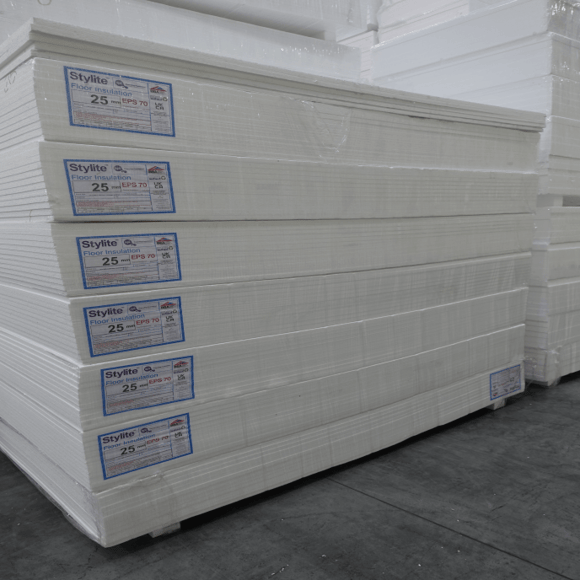 At Buy Insulation Online, we offer a wide range of products for perimeter upstand insulation, from leading brands such as IKO, Celotex, Jablite, Polyfoam, Marmox, and Stylite. Here are some of the products that you can consider for your project:
At Buy Insulation Online, we offer a wide range of products for perimeter upstand insulation, from leading brands such as IKO, Celotex, Jablite, Polyfoam, Marmox, and Stylite. Here are some of the products that you can consider for your project:
- IKO Enertherm PIR Insulation Board: This is a high-performance PIR insulation board, with a low thermal conductivity of 0.022 W/mK, high compressive strength of 300 kPa, and a high fire performance of Class B-s1, d0. It is suitable for various applications, including perimeter upstand insulation, floor insulation, wall insulation, and roof insulation. It is available in various thicknesses, from 25 mm to 140 mm.
- Celotex GA4000 Aluminium Faced High-Performance PIR Insulation Board: This is another high-performance PIR insulation board, with a low thermal conductivity of 0.022 W/mK, high compressive strength of 140 kPa, and high fire performance of Class B-s1, d0. It has a unique aluminium facing, which provides enhanced thermal performance and moisture resistance. It is suitable for various applications, including perimeter upstand insulation, floor insulation, wall insulation, and roof insulation. It is available in various thicknesses, from 50 mm to 100 mm.
- Jablite Jabfloor EPS70 Polystyrene Insulation Board: This is a cost-effective polystyrene insulation board, with a moderate thermal conductivity of 0.038 W/mK, a moderate compressive strength of 70 kPa, and a moderate fire performance of Class E. It is suitable for floor insulation, especially for underfloor heating systems, as it has good thermal stability and dimensional stability. It is available in various thicknesses, from 25 mm to 200 mm.
- Polyfoam Floorboard Extra XPS Insulation: This is a premium XPS insulation board, with a low thermal conductivity of 0.034 W/mK, a high compressive strength of 300 kPa, and a high-water resistance of 0.7%. It is suitable for floor insulation, especially for basements, cellars, and swimming pools, as it has excellent resistance to moisture, mould, and rot. It is available in various thicknesses, from 25 mm to 150 mm.
- Marmox Thermablock: This is a special insulation block, made from XPS and concrete, with a low thermal conductivity of 0.047 W/mK, high compressive strength of 700 kPa, and high fire performance of Class A1. It is suitable for perimeter upstand insulation, as it creates a thermal break at the base of the external wall, reducing the heat loss and the risk of condensation. It is available in a standard size of 600 mm x 100 mm x 65 mm.
- Stylite EPS70 Polystyrene Insulation Board: This is another cost-effective polystyrene insulation board, with a moderate thermal conductivity of 0.038 W/mK, a moderate compressive strength of 70 kPa, and a moderate fire performance of Class E. It is suitable for floor insulation, especially for screeded floors, as it has good thermal performance and load-bearing capacity. It is available in various thicknesses, from 25 mm to 200 mm
- Polyfoam Upstand Insulation Board: This is a specific XPS insulation board, designed for perimeter upstand insulation. It has a low thermal conductivity of 0.034 W/mK, a high compressive strength of 300 kPa, and a high water resistance of 0.7%. It has a tapered edge, which allows for easy installation and a smooth finish. It is suitable for perimeter upstand insulation, as it reduces the heat loss and the thermal bridging at the junction between the floor slab and the external wall. It is available in a standard size of 1200 mm x 600 mm x 50 mm.
Conclusion
Perimeter upstand insulation is a vital component of any building, as it can improve the thermal performance, energy efficiency, fire safety, and aesthetics of the building. Choosing and installing the right perimeter upstand insulation product requires careful consideration of various factors, such as thermal conductivity, compressive strength, water resistance, and fire performance.
At Buy Insulation Online, we offer a wide range of products for perimeter upstand insulation, from leading brands such as IKO, Celotex, Jablite, Polyfoam, Marmox, and Stylite. You can browse our website and find the product that suits your needs and budget. If you have any questions or need any advice, please feel free to contact us. We are happy to help you with your project. Thank you for reading this article. We hope you found it informative and helpful.
Frequently Asked Questions
Q: What are the benefits of using 150mm Celotex GA4000 for perimeter upstand insulation?
A: Using 150mm Celotex GA4000 for perimeter upstand insulation provides enhanced thermal performance and meets the requirements of building regulations, offering an effective solution for preventing heat loss at the edge of the floor.
Q: What is the role of upstand boards in perimeter upstand insulation?
A: Upstand boards are used to insulate the edge of the floor and create a thermal barrier, ensuring that the perimeter insulation extends from the bottom of the floor to the top, meeting the wall and preventing heat loss.
Q: How does perimeter upstand insulation cater to slab and concrete floor constructions?
A: Perimeter upstand insulation is particularly important for slab and concrete floor constructions as it helps to insulate the edge of the floor, preventing heat loss and meeting the required thermal performance standards.
Q: How can perimeter upstand insulation be delivered and installed effectively?
A: Perimeter upstand insulation should be delivered as specified, ensuring that the materials are in good condition. During installation, attention should be given to ensuring a continuous thermal barrier at the junction of the floor and the wall, meeting the specified thickness and building regulations.
Q: What are the building regulations that need to be considered when installing perimeter upstand insulation?
A: When installing perimeter upstand insulation, it is important to ensure that it meets the specific building regulations regarding thermal performance, thickness, and continuity at the edge of the floor, contributing to the overall energy efficiency of the building.
